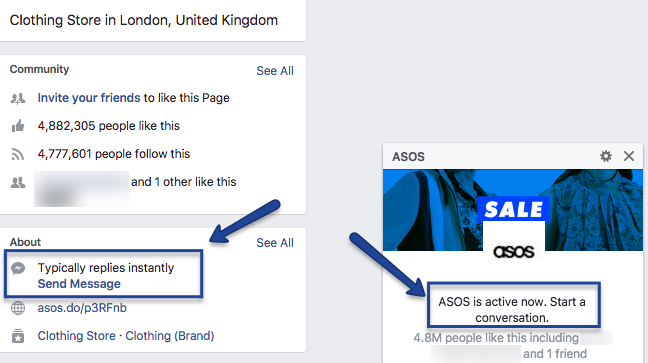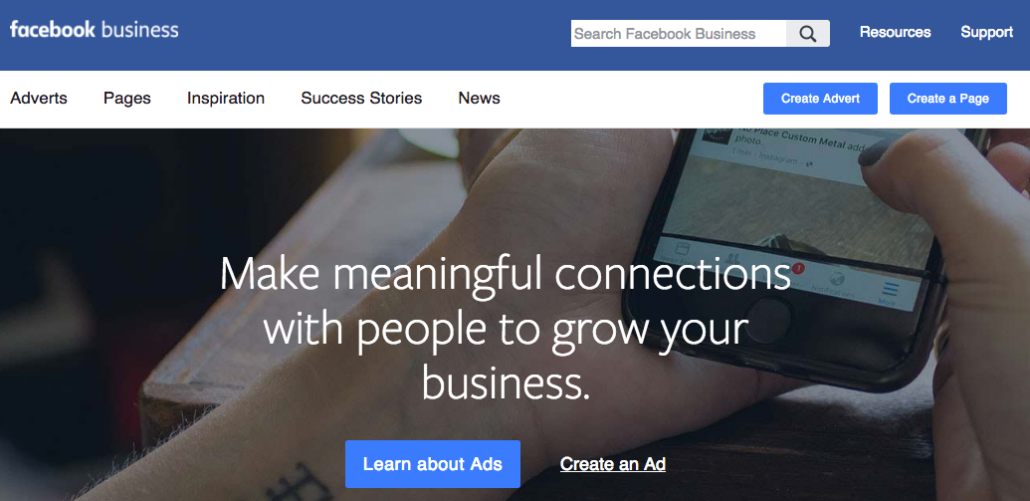8. Strategies to Increase Sales
As you can notice, there are a lot of things to do while you are waiting for the first sale to happen, but even when it does happen, it is not over. There are plenty of activities that will help you improve your business and increase profit. The work on promoting the products and reaching customers is far from over. Actually, these activities go in a circle.
Your goal is to sell products consistently and to increase the customer base gradually. The activities that help you get your first sale are helpful later on as well. For each of those, you get to define a set of tactics and strategies to use in order to maximize the effect of those activities. As your business grows, so will your approach to using different tactics to promote it with online marketing.
With this in mind, here are a couple more tips to make online marketing a part of your routine:
Social media marketing
You should actively be using at least one social media to interact with your online customers. Social networks enable users to find you, to interact with you and learn more about your products, special offers, etc.
To make the most out of social media, follow these tips:
Choose the networks
There are hundreds and thousands of social media out there, but in terms of business, you will probably end up using only a selected few. Choose the networks that are most likely to help you reach customers and promote your products. At first, you might create profiles on multiple networks, but after a while, you will begin to notice that only some of them actually bring benefits. This makes them worth the time and effort, and that is why you will keep posting on those, while you might reduce the activity on the networks that are not converting.
Create a plan
Publishing as an e-commerce business on social media usually entails a particular plan. It is not enough to post product links or blog articles randomly, but instead, try to make posting activity organized and coherent. Have in mind that social media users love helpful and engaging posts, which are likely to perform better. This means that providing great content through social media is very important, while promotional posts and advertisements of products are activities you should occasionally do and if possible, discreetly. For example, if you want to promote new tennis gear in your online shop, try writing a blog post about tennis gear and how it can influence a player’s game. Instead of directly sharing product links, you will create a useful article with links to products for those interested in buying tennis gear. Ideally, you want to mix between helpful and promotional content, but this ratio should be 90:10 for example. So, more great content, and less direct advertising.
To follow these guidelines, create a plan on what you will post. Your plan can also include the times when you will post on social media. This kind of planning is usually based on customers’ behavior research or the engagement statistics from the previous period.
Try creating a calendar to organize everything and make sure your offer diverse content to your customers. Using social media management dashboards and scheduling tools can help you with keeping everything organized. Helpful tools for this purpose include:
Be active on social media
While customization of the profiles and regular status updates are helpful in terms of establishing the presence on social media, being active is another major component you should not neglect. You must not forget that social networks are all about people, connections, and communication they can establish through these networks.
When users interact with your business profile, regardless if they leave a comment or send a private message, they expect real people to answer their questions. They do not want a template that will be copied and pasted all over again. You should always try to make it personal and to make the customers feel like they get the attention they deserve. It is also helpful if you are monitoring social network notifications regularly and if you are able to respond rather quickly.

Explore paid options
Most social networks offer paid options to help with reaching more users. Organic reach is usually limited to your own followers, and even in that case, not all of them is going to see the posts you share. To make sure you increase the visibility of your post, try using paid advertising as an option and see how the ad performs. If you notice that you can make your investment worth, if you see real profit from the social media ads, then this is something that should be integrated into your social media marketing strategy.

Image: https://www.facebook.com/business
The major benefit of paid advertising on social media are:
- Reaching more people
- Increasing brand awareness
- Using advanced targeting options (target based on location, gender, based on the interest, target members of specific groups, etc.)
- Scheduling ads (choose the time during which the ad will be active)
Analyze the performance
Once you analyze the performance of the accounts, you can see the whole picture. This can help you determine whether you want to be active on a certain network, whether you need to change your approach to social media marketing, etc. Pay attention to these things:
- The number of followers for each network
- Engagement level (comments, shares, likes)
- Negative statistics (unlikes, marked as spam, reported post, etc.)
- Click-through rate
- Organic vs. paid reach
- The number of conversions (sales, leads, etc.)
Finally, it is important to have in mind that social media marketing is a whole segment in online marketing, and as such, it should be studied in more details. These are quick suggestions on how to use social media to keep your business profiles active, but to get the full potential of having and implementing a social media strategy, you should explore the topic in more details. For starters, check out this Social Media Marketing Course.
Email marketing
Collecting emails on your website is an excellent way to build a list of those interested in your business. On one side you have those interested, while on the other you have those who already are your customers, which means that they have completed at least one purchase on your website. As a result, this means that you will have to use at least two different strategies to communicate with those users effectively.
You can divide the strategies like this:
Subscribers
This first group includes the users who subscribe to your blog updates or provide their email address so that they could redeem an offer you have provided, such as a coupon, or a free template. When you use email marketing, your goal is to get those subscribers interested in your business even more. Here is what you can do:
- Do not send a promotional email as soon as the subscriber is on the list
- Instead, start building this relationship gradually
- Offer even more great content to the subscribers
- Share some helpful content from your blog
- Use personalized approach
- Customize each email campaign
- Make sure your email message is mobile-friendly
- Then share a promotional email where you would feature some of your products
- Offer exclusive discounts for subscribers (or first-time customers) only
Customers
Customers are those who have completed at least one purchase. This means that they were persuaded to try out your products. However, this is not to say that your relationship is over. The same way you nurture the relationship with the subscribers, it is necessary to nurture the relationship with the customers.
Some of these tactics can be helpful:
- Ask for their impression related to the product, or any feedback they would like to share
- Ask if the customer was satisfied with the purchase process, customer service, etc.
- Suggest that they share the experience (or link) with friends
- Offer exclusive discounts for recurring customers
- Send customized email with product suggestions based on the previous purchase
- Share product suggestions at the perfect time (for example, if you sell printer ink cartridges, and you know that one could last approximately a month, you could send a reminder email next month, just in time when the person would actually need to buy a new one).
Analyze the abandoned cart
We have already mentioned that an astonishing number of products placed in carts is never actually purchased, but instead, the cart is abandoned. This abandonment can happen anywhere through the checkout process, but it most commonly does when unexpected shipping costs are calculated (based on the studies).
Nowadays, most e-commerce businesses use email as the first piece of information they require when the person starts the checkout process. Some require creating an account, but more and more business are deciding to skip this step to speed up the process and make purchase quicker and easier for the customer. Asking for an email address early on guarantees that you get priceless information to contact the person even if they abandon the cart along the way.
This kind of a situation requires a completely new email marketing approach where you will have to define how you address your customers (or potential customers). Obviously, there was a reason for that person to abandon the cart. They might be surprised by the shipping costs, but they also might be uncertain whether they want to buy the product from you or not. Or perhaps they were simply in a rush and had to quit the browser before they were able to complete the purchase.
When sending an email to the email addresses you have in your abandoned cart list, you should:
- Remind the person they have the products in the cart
- Ask for feedback about the purchase process (a poll with ready-made answers is much quicker than for the users to write the feedback themselves)
- Share helpful resources from your blog or website
- Offer a special discount if they complete the purchase they have started within a certain time limit
In conclusion, we have to highlight the importance of the user in e-commerce business. All of the work you will have when trying to make the first sale and beyond is focused on reaching new users and converting those interested into your customers. The users will become the center of your strategy and your ultimate goal will be understanding users and which practices would be the most effective in order to turn them into your customers.
As you will soon realize, a significant part of an e-commerce business is developing and nurturing that business-to-customer relationship. Both social media marketing and email marketing are helpful strategies to do so, which is why you should explore them in greater details.
